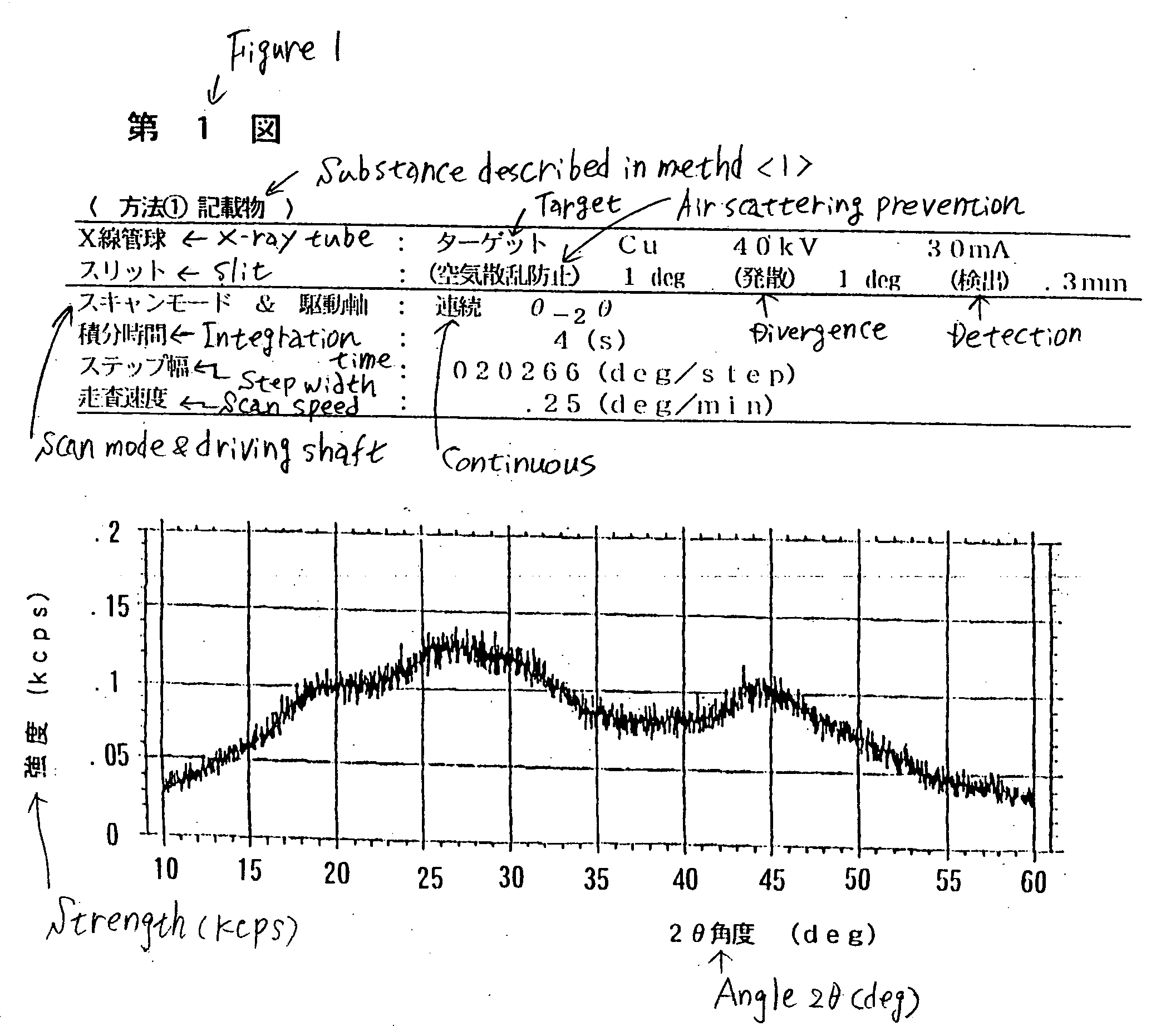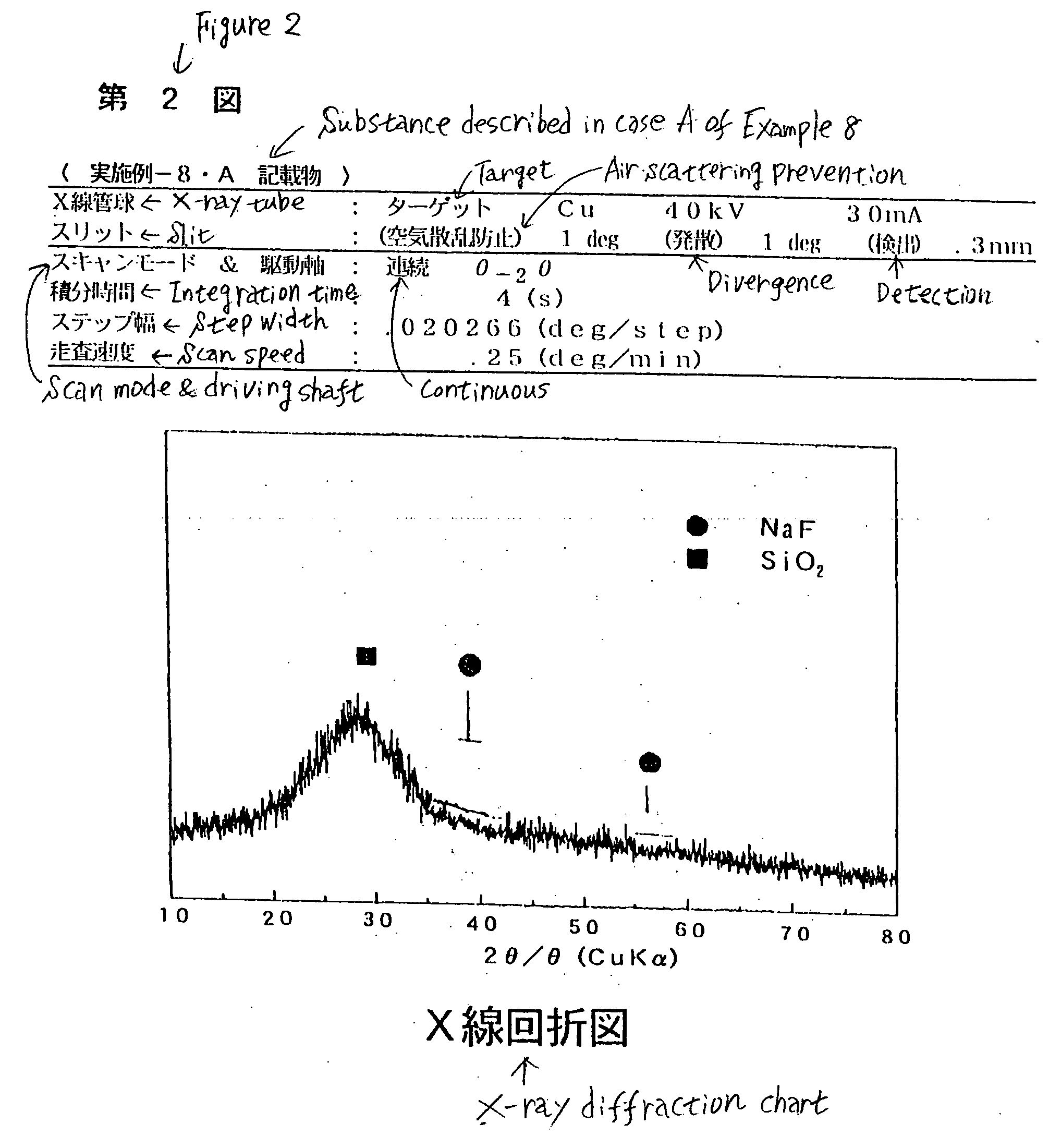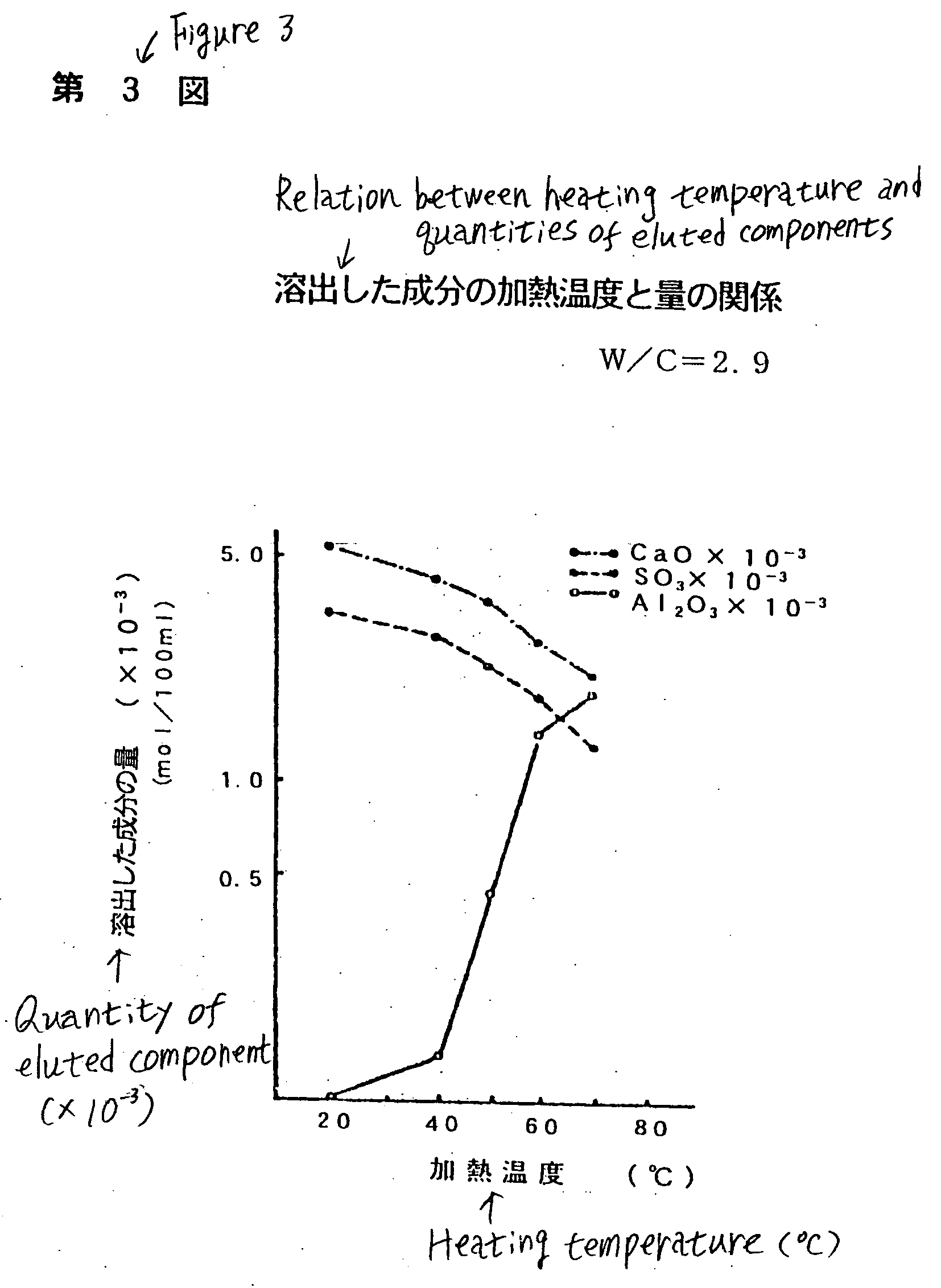Inorganic dissolution accelerator making metal or inorganic substance water-soluble
a technology of inorganic dissolution and accelerator, which is applied in the field of inorganic dissolution accelerator, can solve the problems of no method for making metals and inorganic substances in solvent-free aqueous high concentration solutions, and achieve the effect of high strength fr
- Summary
- Abstract
- Description
- Claims
- Application Information
AI Technical Summary
Benefits of technology
Problems solved by technology
Method used
Image
Examples
example 1
The following experiment was performed under the condition that the amount of the inorganic dissolution aid of the present invention was set at 10 g for each run, which was dispersed in 100 cc of water to prepare a 10% solution of an inorganic dissolution accelerator; representative examples of the components included the following [sodium fluoride:caustic soda] ratio sets: [1:9] in Case A, [5:5] in Case B, and [8:2] in Case C.
The 10% solution of the inorganic dissolution aid A (30 g, pH 13) was warmed to 40° C., the amount of boric acid was increased in the order of 3 g, 6 g (3+3), 9 g (6+3), and then the solution was transparent in any case, and the solubility reached 9 / 30=30%; when further increased to 12 g (9+3) and warmed to 70° C., and then increased to 15 g, the pH became 6.6 and a transparent solution was obtained. The solubility of boric acid was found to be 15 / 30=50%. In contrast to the case of boric acid, the added amounts of sodium fluoride and caustic soda were respe...
example 2
Cut pieces of copy paper were dipped in all the Case solutions, and taken out and allowed to be dried in the atmosphere; any piece of paper maintained flexibility, had a flat and smooth surface, and was only carbonized without flush over with flame when ignited.
example 3
The 10% solution of the inorganic dissolution aid of Case C (30 g, pH 12.5) was mixed with 3 g of boric acid and heated to 60° C. as described above. The solution became transparent and the pH thereof was 8.5. Further, 3 g of boric acid (6 g in total) was mixed and then the pH became 5.4 and the solution became transparent. Further mixing of boric acid will decrease the pH down to 4 and the adjustment will be possible.
PUM
| Property | Measurement | Unit |
|---|---|---|
| temperature | aaaaa | aaaaa |
| temperature | aaaaa | aaaaa |
| temperature | aaaaa | aaaaa |
Abstract
Description
Claims
Application Information
 Login to View More
Login to View More - R&D
- Intellectual Property
- Life Sciences
- Materials
- Tech Scout
- Unparalleled Data Quality
- Higher Quality Content
- 60% Fewer Hallucinations
Browse by: Latest US Patents, China's latest patents, Technical Efficacy Thesaurus, Application Domain, Technology Topic, Popular Technical Reports.
© 2025 PatSnap. All rights reserved.Legal|Privacy policy|Modern Slavery Act Transparency Statement|Sitemap|About US| Contact US: help@patsnap.com



